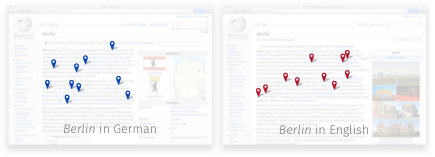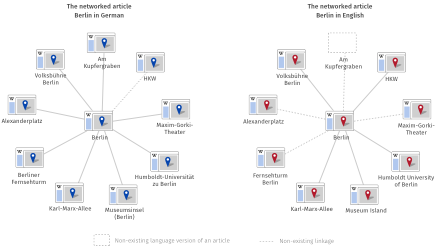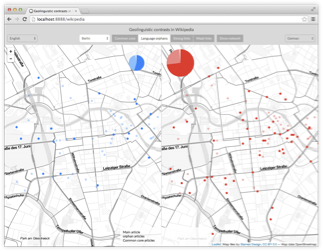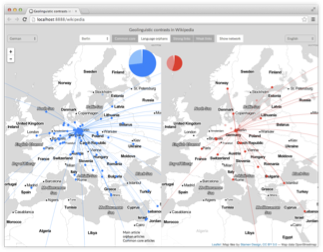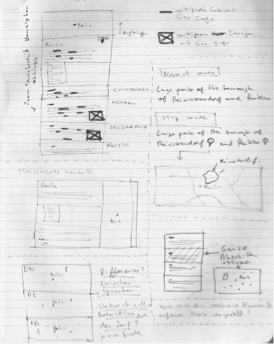Geolinguistic Contrasts in Wikipedia
Making knowledge diversity visible across Wikipedia’s language versions
2014
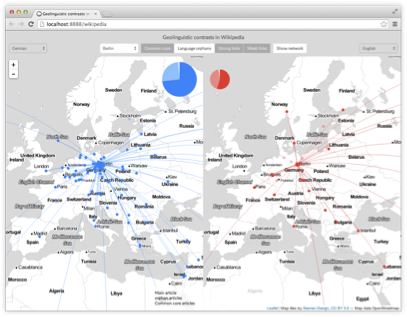
Initial situation — According to Daniel Weinberger, knowledge has become less certain and more diverse in the age of networks than it used to be in the age of books: It now evolves at the pace of the changes made on Wikipedia and on search engines algorithms.
Approach — In this project, I intended to explore knowledge diversity across the different language versions of one and the same article on Wikipedia.
Result — As each Wikipedia article can't be considered as an independent information object, but rather as an entity networked to further articles, I decided to visualize and compare the geographical dimension of the network associated with the different language versions. The prototype is based on leaflet.js, data was parsed through the Wikipedia and Wikidata APIs and map tiles are originating from Stamen.
Try the prototype online (Google Chrome is recommended)
Process
- Concept ideation
- Sketching
- Wikipedia/Wikimedia API Parsing
- Front-end programming
—
Project made in the Google Maps and beyond: Karten für Desktop, Mobile und Print class of Sebastian Meier at the University of Applied Sciences Potsdam, Germany
